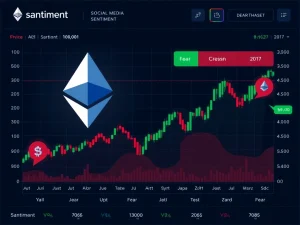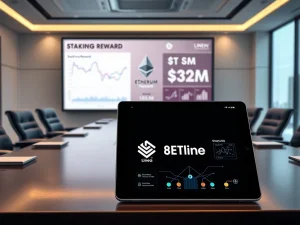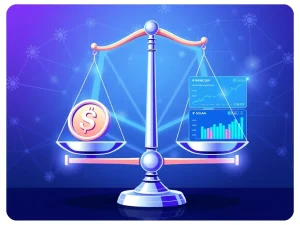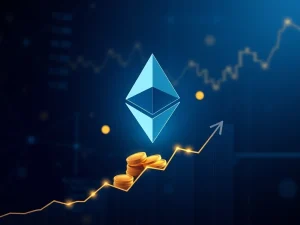Solana’s Epic 20% Block Size Boost: Fueling SOL Price Surge and Scalability Dominance
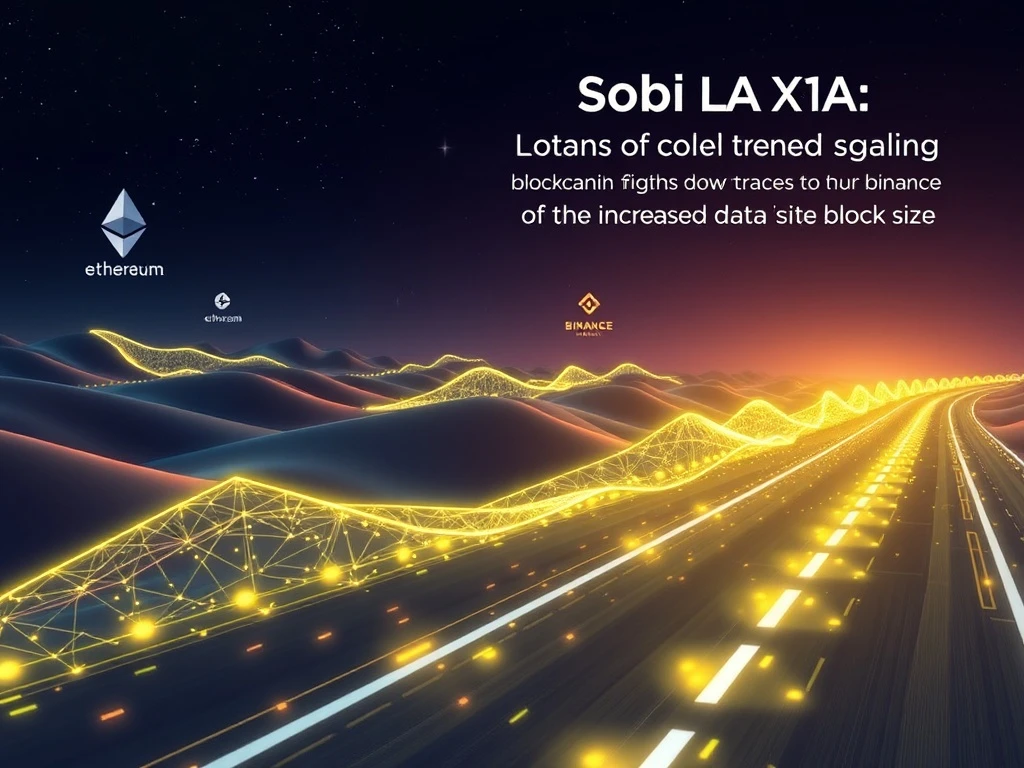
The crypto world is buzzing, and all eyes are on Solana. Known for its blazing-fast transactions and low fees, Solana has just made a significant move that could redefine its position in the blockchain landscape. With a Solana price surge of nearly 50% in the last month, the network is not just growing; it’s evolving. A recent 20% boost to its block size signals a bold step towards unparalleled efficiency, aiming to solidify its place as a formidable contender against giants like Ethereum and Binance Smart Chain. But what exactly does this technical upgrade mean for users, developers, and the future of decentralized applications?
Unpacking Solana’s Block Size Upgrade: What Does It Mean for Throughput?
In a move that underscores its commitment to high performance, Solana recently implemented the SIMD-0256 proposal, increasing its block size by a substantial 20%. This isn’t just a minor tweak; it’s a strategic enhancement designed to dramatically improve the network’s ability to handle transactions. Previously capped at 50, the block limit has now been raised to 60. But what does this mean for the average user or developer?
- Increased Capacity: Larger blocks mean more transactions can be processed within each block, significantly boosting the network’s overall throughput.
- Reduced Congestion: By accommodating more data, the upgrade aims to alleviate network congestion, especially during peak demand periods.
- Faster Finality: With more efficient processing, transactions can achieve finality (irreversibility) quicker, enhancing the user experience for dApps and payments.
This enhancement directly targets one of the most critical challenges in blockchain: scalability. By expanding its block capacity, Solana is reinforcing its foundation as a platform built for speed and efficiency, making it even more attractive for high-volume applications like DeFi protocols and NFT marketplaces.
The SOL Price Surge: A Reflection of Growing Confidence?
Coinciding with these technical advancements, Solana’s native token, SOL, has experienced an impressive rally. Over the past month, the SOL price has surged by a remarkable 47.6%, with significant gains observed in both the two-week (30%) and one-week (20%) periods leading up to the announcement. While it’s important to note that these price movements aren’t solely attributed to the block size upgrade, they certainly reflect a growing investor confidence in Solana’s technical roadmap and ecosystem expansion.
- Investor Optimism: The market is reacting positively to Solana’s proactive approach to scalability and performance.
- Ecosystem Growth: Beyond the technical upgrades, Solana’s vibrant ecosystem, including a thriving DeFi scene and burgeoning NFT market, continues to attract capital and users.
- Broader Market Activity: The timing of the upgrade aligns with a period of heightened activity in the broader cryptocurrency market, where investors are increasingly seeking out robust, scalable blockchain solutions.
This upward trend in SOL price suggests that the market views Solana as a blockchain with strong fundamentals and significant long-term potential, especially as it continues to roll out key infrastructure improvements.
Solana’s Grand Ambition: Can It Outpace Ethereum and Binance Smart Chain?
Solana has long positioned itself as a high-performance alternative to established blockchains, and this latest upgrade intensifies its ambition to be a leading Ethereum competitor and rival to Binance Smart Chain (BSC). Ethereum, while dominant, often grapples with high gas fees and network congestion, especially during periods of high demand. BSC, while faster and cheaper than Ethereum’s current state, still faces its own scalability questions as its user base grows.
Here’s how Solana aims to differentiate itself and potentially pull ahead:
- Sub-Second Confirmations: Solana’s architecture already allows for transaction confirmations in less than a second, a significant advantage for real-time applications.
- Lower Transaction Fees: The network maintains notoriously low transaction fees, making it economically viable for frequent micro-transactions.
- Enhanced Throughput: The increased block size directly contributes to higher transactions per second (TPS), putting it in a stronger position to handle mass adoption.
For developers building dApps, particularly those in gaming, high-frequency trading, or large-scale consumer applications, Solana offers a compelling environment where performance isn’t compromised by network limitations. This strategic enhancement is designed to make Solana an even more attractive destination for projects looking for a truly scalable foundation, challenging the market share of established players like Ethereum and BSC.
Navigating the Future: Solana’s Blockchain Scalability Journey
While the recent block size increase is a clear win for blockchain scalability, Solana’s journey isn’t without its challenges. The competitive landscape is constantly evolving, with new protocols emerging that promise even faster finality and higher TPS. For instance, projects like Bitcoin Solaris claim 2-second finality and 10,000 TPS, though these claims are yet to be proven at scale.
Solana’s developers are acutely aware of these pressures and are committed to iterative improvements. The SIMD-0256 proposal was implemented via a soft fork, minimizing disruption and demonstrating the network’s agility. However, achieving sustainable blockchain scalability involves balancing several factors:
- Validator Resource Burden: Larger blocks, while boosting throughput, can increase the computational and storage demands on network validators. This could potentially lead to centralization if only powerful entities can afford to run validators.
- Network Stability: Supporting diverse use cases, from complex DeFi protocols to the recent surge in meme tokens launched on platforms like Pump.fun, tests the network’s resilience and stability under varied loads.
- Decentralization vs. Performance: The ongoing trade-off between maximizing performance and maintaining a high degree of decentralization remains a critical consideration for Solana’s long-term health.
Solana’s ability to navigate these complexities, adapt to emerging trends, and continue innovating will be crucial for its sustained success in the competitive blockchain arena.
Solana’s recent 20% increase in block size marks a pivotal moment in its development, solidifying its commitment to speed, efficiency, and blockchain scalability. This technical upgrade, coupled with the impressive SOL price surge, paints a picture of a network rapidly maturing and gaining significant traction. By proactively addressing throughput challenges, Solana is not just enhancing its current capabilities but also strategically positioning itself as a serious Ethereum competitor and a leader in the next generation of decentralized applications. While challenges like validator burden and intense competition persist, Solana’s focus on iterative improvements and performance optimization demonstrates a clear vision for a high-speed, low-cost platform. The crypto community will be watching closely as Solana continues to build out its infrastructure, aiming to become the backbone for global, high-throughput decentralized solutions.
Frequently Asked Questions (FAQs)
Q1: What is the significance of Solana increasing its block size?
A1: Increasing the block size by 20% allows the Solana network to process more transactions per block, significantly boosting its overall throughput and reducing network congestion. This enhancement makes the network more efficient and scalable.
Q2: How has the SOL price reacted to this upgrade?
A2: While not directly tied to the block size upgrade, the SOL token has seen a substantial 47.6% price increase over the past month. This positive market reaction reflects growing investor confidence in Solana’s technical roadmap and its ability to deliver on scalability.
Q3: How does Solana aim to compete with Ethereum and Binance Smart Chain?
A3: Solana aims to outpace Ethereum and Binance Smart Chain by offering superior speed (sub-second confirmations), significantly lower transaction fees, and higher transaction throughput. The block size increase further strengthens its position as a high-performance alternative for dApps requiring fast and cost-effective operations.
Q4: Are there any potential challenges with larger block sizes for Solana?
A4: Yes, while larger blocks enhance throughput, they can increase the resource demands on network validators. This might lead to concerns about potential centralization if only powerful entities can afford to run validators. Solana’s developers must balance performance with decentralization and network stability.
Q5: What is the SIMD-0256 proposal?
A5: SIMD-0256 is the proposal under which Solana increased its block limit from 50 to 60. It’s a key technical enhancement implemented via a soft fork, designed to improve network efficiency and scalability without disrupting existing operations.
Q6: What types of applications benefit most from Solana’s enhanced scalability?
A6: Applications requiring high transaction volumes and low latency benefit most, including decentralized finance (DeFi) protocols, non-fungible token (NFT) marketplaces, gaming platforms, and high-frequency trading applications.



